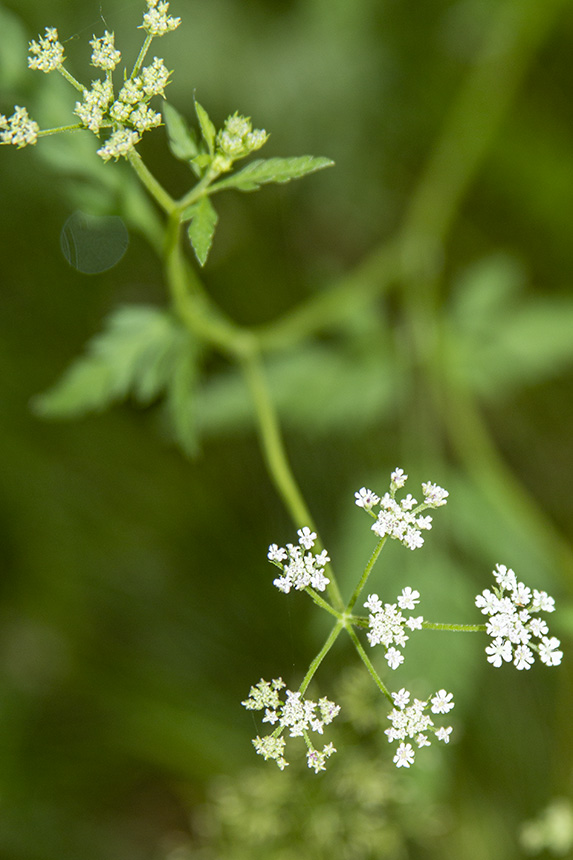
Japanese hedge parsley (Torilis japonica) is native to Europe, Asia, and the Indian subcontinent. It was introduced in North America in 1917 and is now naturalized. In the United States it is widespread but sporadic in the east and in the Pacific Northwest. It is found in natural areas, including open woodlands, woodland edges, savannas, and thickets; and in disturbed sites, including pastures, roadsides, and railroads. It grows under partial sun to full shade, sometimes under full sun, in dry to moderately moist soil. It is considered an aggressively invasive weed here, where it can out-compete native species. Wisconsin lists it as Prohibited/Restricted Invasive – Eradicate! (their emphasis). In Minnesota it is not listed but there is a program to eradicate it in Dakota County parks.
Japanese hedge parsley can be 8″ to 48″ tall, but in Minnesota flowering plants are usually no more than 24″ in height. In Minnesota it is a biennial, taking two years to complete its life cycle. In more southerly regions it is an annual. The stems are erect, grooved, and hairy, The leaves are fern-like, divided into three or five sections then divided again. They are covered with hairs both above and below. Tiny white flowers appear in a loose umbrella-like cluster at the end of the stem and the branches. The fruit is a small brown seed covered with hooked hairs that will stubbornly cling to any fabric.
http://www.minnesotaseasons.com/Plants/Japanese_hedge_parsley.html
